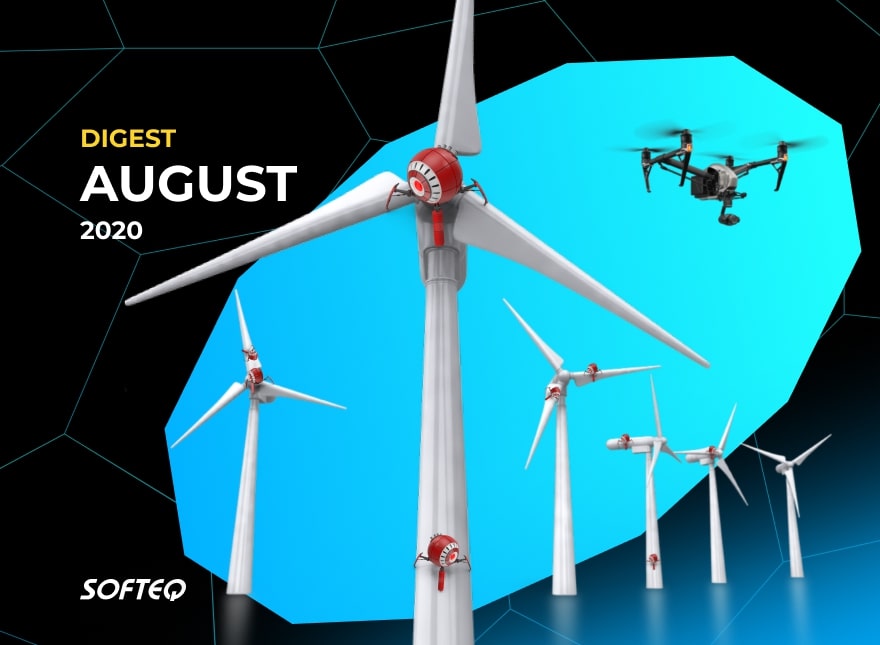This is What Techies Talked about in August

In this issue of the Tech Digest: the Internet of Things is getting SaaS-y, wearables can help pharma companies move forward with clinical trials, and what enterprises get wrong about cybersecurity in 2020. All that and more in a 10-minute read.
The Internet of Things goes full-on SaaS: how do technology vendors monetize connected devices in 2020?
Since 2012, the Product as a Service (PaaS) business model has dominated the Internet of Things market. Whether you buy a fitness tracker or install a smart CCTV system in your office, there’s always some kind of service—i.e., personalized workout plans, enhanced security, or extra storage space in the cloud—on top of it. Most importantly, the hardware that underlies PaaS solutions needs to be updated every few years. With the 3G network shutdown looming on the horizon, both IoT vendors and their clients will have to retire smart devices with built-in 3G modules. It doesn’t come as a surprise that many businesses resist the idea of owning smart devices and bearing the maintenance burden. According to Stacey Higginbotham, a notable IoT expert, technology companies are shifting their focus from selling hardware with additional services to selling services on a pay-per-use basis.
Using wearables in clinical trials: where do we stand?
As pharma companies around the globe are racing to advance their COVID-19 treatment and vaccine trials, some researchers wonder how they’ll be able to achieve the feat with social distancing regulations still in place. That’s where wearable devices—e.g., smartwatches, oxygen monitors, and glucose meters—can make a difference. These devices help physicians remotely track patients’ vital signs, adjust medication dosage, and evaluate clinical trial participants’ response to new drugs. However, there’s a major issue with this approach. Although the pandemic has accelerated the adoption of telehealth and remote patient monitoring solutions, healthcare technologies are still as predictable as the Wild West. What steps should pharmaceutical and HealthTech companies take to collect patient data, keep it safe, and share research findings across disparate technology systems?
Software developer jobs on the rise: what set of skills are companies looking for?
According to a recent survey unveiled by Harvey Nash, a leading IT recruitment agency, DevOps, Big Data, and analytics are no longer among the top technical skills required in the enterprise. This year, cybersecurity, enterprise architecture design, and cloud computing have taken center stage. And this is not a coincidence. With 42% of US employees working from home full time, companies are struggling to provide access to critical data stored in siloed IT systems to remote employees while securing a motley of endpoint devices. The number of companies looking to hire software engineers, cloud architects, and security experts is growing too—particularly, within the telecommunications, healthcare, and technology industries.
From self-powered sensors to smart grids: how is IoT benefiting the renewable energy sector?
Solar farms, wind turbines, and biomass power plants account for 25% of the global energy output. But the green energy revolution is not yet in full swing. For one thing, deploying green power plants at scale increases electricity costs for end consumers by up to 250%. And for another, renewable energy equipment, such as photovoltaic panels and wind turbine blades, cannot be recycled and keeps piling up at landfill sites. Now we’re seeing more companies involved in sustainable energy production turn to the Internet of Things in the hope of making green energy more affordable, reliable, and environment-friendly. To reduce equipment maintenance costs, these companies enhance generators, power lines, and distribution substations with battery-based or self-powered sensors, which use ambient energy sources to operate indefinitely. Drones help utility companies reduce the costs associated with getting technicians to remote sites to inspect equipment. Wearable devices can monitor employees' fatigue levels in real time and thus prevent workplace fatalities. And by placing sensors along power distribution lines and in consumer homes, energy companies can collect and analyze power usage data.
But there’s a catch. Complex, wide-reaching, and increasingly connected networks that deliver electricity to billions of endpoint devices are low-hanging fruit for cybercriminals. In the past 12 months, 56% of utility companies suffered at least one cyberattack. Thirty percent of attacks targeting hardware and software used by energy companies go undetected. In his recent article for IoT World Today, Rich Castagna provides some actionable security tips for energy companies undergoing Digital Transformation.
Cybersecurity in the post-pandemic world: what are we getting wrong?
The COVID-19 pandemic has accelerated the shift to online. But while enterprises have been quick to make the leap, they failed to protect themselves well enough. Garmin, a US manufacturer of wearable devices, fell victim to a cyberattack last month. The company had to pay a $10 million ransom to restore access to its products and services. Raj Samani, a chief scientist at McAfee, believes there are several misconceptions about cybersecurity leading to high-profile cyberattacks like this. In 2019, 61% of businesses were already using IoT devices and applications, so you can no longer safeguard your IT systems by installing antivirus software on PCs and smartphones only. Forty-eight percent of companies that use IoT in the workplace are lacking technology tools to identify compromised devices. Above all, we should not implicitly trust new security technologies like biometric authentication. Facial recognition algorithms designed before the pandemic, for example, struggle to identify people wearing face masks. And Fawkes, an application created by a group of scientists from the University of Chicago, is capable of making subtle changes to photographs so that any algorithm scanning these images will see you as an entirely different person.
